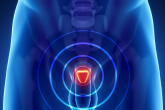
There are few situations more frightening than a medical emergency that you feel unprepared to handle. If someone suddenly becomes unconscious right in front of you would you know how to help? Are you confident enough to use simple first aid or lifesaving measures during a medical emergency?
What is First Aid?
First aid is the medical attention that you give on the spot immediately after a sudden illness or injury occurs. It is a one-time treatment and needs little technology or training. It is the first help you give to a sick or injured person until full medical treatment is available.
The goal of first aid is to:
- Prevent further injury
- Preserve life
- Promote recovery

What is CPR?
Cardio-pulmonary resuscitation (CPR) is a lifesaving technique that is useful in many emergencies, in which someone’s breathing or heartbeat has stopped. It is easy to learn and can save lives in situations such as heart attack, stroke or near drowning.
Do you know that most people, who experience cardiac arrest at home, work or in a public place die because they don’t receive immediate CPR from someone on the scene? It’s always better to do something than to do nothing at all. However, it’s crucial that what you do doesn’t further harm the injured or sick person.
Why is it important to perform first aid and CPR in medical emergencies?
Much of Sub-Saharan Africa (SSA) has poorly functioning health care systems. A well-developed emergency medical service staffed with trained emergency medical workers is uncommon on the continent.
Ambulance services are either non-existent or inadequate and long waiting times in hospital emergency rooms often further endanger the patient. For these reasons, knowing how to give first aid or CPR in a medical emergency is the best thing you can do for your family and community. Buying a small first aid kit for your home is money well spent.
Here’s how to help in some common medical emergencies.
Heart attack, stroke or cardiac arrest
You’re relaxing at home after work when your spouse starts to moan, grabs their chest and falls off the chair unconscious and not breathing. You must perform CPR immediately.
Click on the link to watch a simple demonstration of ‘Hands Only’ CPR.

Bleeding wound
What if your child falls while playing and is bleeding from a wound?
- Check for wound for foreign objects such as glass or stone.
- Put pressure on wound to stop bleeding using a clean cloth or gauze using the flat of the fingers or palm of hand.
- Keep injured arm or leg elevated to assist in stopping bleeding.
- You can also wrap a bandage tightly over the cloth or gauze to keep pressure on the wound.
- Maintain pressure until bleeding stops.
Convulsions (also known as Seizures)
A woman sitting next to you on the bus starts convulsing, and falls to the floor. Would you know what to do?
- Try to prevent her from falling, or guide her gently to the floor.
- Put something soft and flat, like a folded jacket, under her head.
- Gently position her on her side so that fluid can leak out of the mouth if she is on the ground, but be careful not to apply too much pressure to the body.
- Don’t force anything, including your fingers, or a spoon into her mouth. You can chip her teeth, fracture her jaw or she could bite your fingers.
- Don’t try to move or hold her down. You can cause an injury, such as a dislocated shoulder.
- Stay with her until the seizure stops, and she is fully awake.
- Don’t offer food or water until she’s fully alert.
- Get her to the nearest hospital
Burn Care
Your child runs into the kitchen while you’re cooking and is burned by hot cooking oil. What should you do?
- Rinse the injury site with cold tap water for about 10 minutes. If the child feels cold, stop rinsing.
- Cover the injury site with sterile gauze or a clean cloth. Don’t burst any blisters. Dress with bandages if available.
- Never apply liniment or other cream or ointment on the injured sites.
- Do not tear off any burned clothing that sticks on the injured site.
- Get your child to the hospital as soon as possible.
Fainting
It’s a blistering hot sunny day, and you’ve been standing in the queue at the bus stop for a while. A man in the line suddenly slumps to the ground and appears unconscious.
- Tap and shout to see if the person responds
- Check for breathing and heart rate
- If he is breathing and his circulation is good, simply raise his feet on to someone’s knees to help blood flow to the brain.
- If he’s not breathing begin CPR immediately
Take a safety course through the Red Cross or educate yourself – you not only can avoid trauma but can also give lifesaving help to someone in need.
By staying calm and remembering these lifesaving tips you can be the difference between life and death for someone who has been injured or is experiencing a medical emergency.
Please tune in to watch The HealthZone every week on Channels TV.
- Tuesday at 2:30 pm, repeat Friday at 4:30 am (DSTV platform)
- Wednesday 12:30 pm, repeat Sunday 7:30 pm (terrestrial platform)
- Thursday 4:30 pm, repeat Friday 12:30 pm (UK Sky TV channel 575)


Marianoniwinde
This was very helpful and educative. The CPR and burns and other areas.thanks so much.